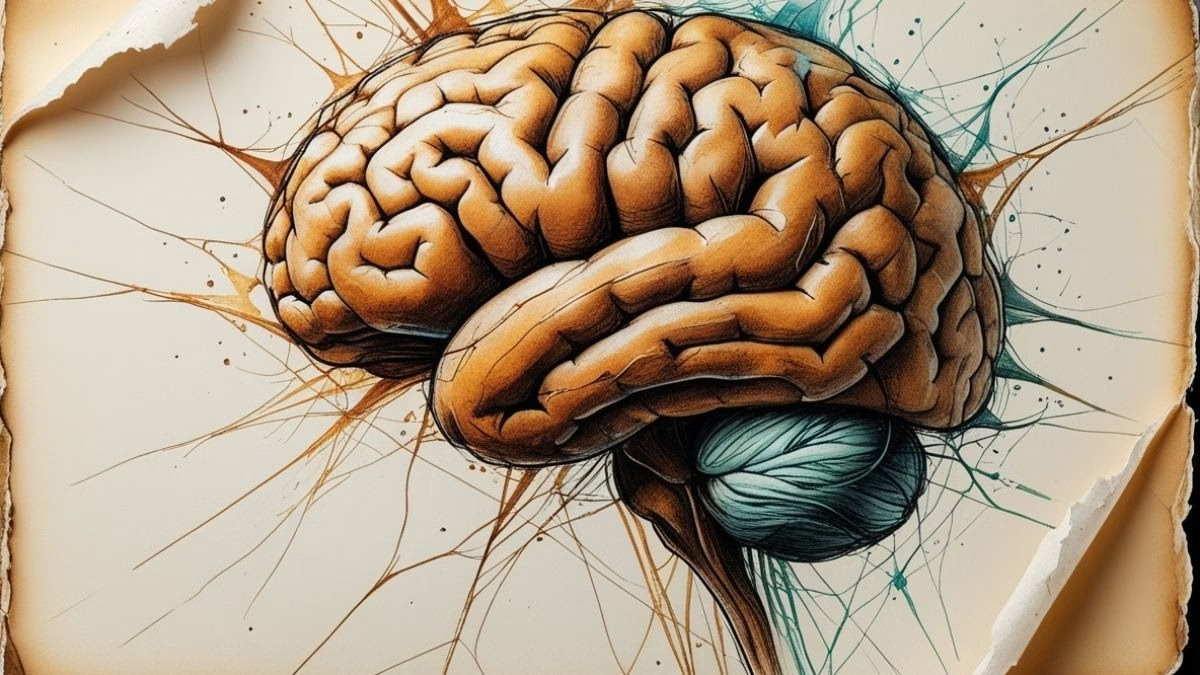Strategies for Listening to Conceptual Lectures
A warm welcome to your listening practice session. In many international English exams, you’ll encounter academic lectures that explain complex concepts and theories, like the one we have today on the psychology of learning. Success in this type of listening requires more than just a good ear; it demands analytical thinking.
Here are some targeted tips to help you master these lectures:
- Differentiate Between Theories: The speaker will likely introduce several different theories or models. Your job is to keep them separate. Listen for names (like Piaget or Vygotsky) and the key ideas associated with each. Note-taking can be especially helpful here to create columns or lists for each theory.
- Listen for Definitions: When a speaker introduces a technical term (e.g., “metacognition,” “scaffolding”), they will almost always define it immediately afterward. Pay close attention to these definitions, as they are prime material for test questions.
- Identify the Structure of the Argument: Is the speaker presenting theories chronologically? Are they comparing and contrasting them? Or are they building up to a single, combined theory? Understanding the lecture’s structure will help you organize the information in your mind.
- Focus on the “Why”: Don’t just hear what a theory says; listen for why it’s important or how it applies to real life. Speakers often use examples to make abstract ideas concrete. Linking the theory to the example will solidify your understanding.
- Anticipate Compare/Contrast Questions: When two or more theories are presented, you can almost guarantee a question will ask you to identify a key difference between them. As you listen, actively look for these points of contrast.
Today’s lecture explores how we acquire knowledge. It will introduce several key psychological concepts and thinkers. Applying these strategies will help you navigate the material effectively. Let’s begin.
Listening Audio
Listening Transcript: Please do not read the transcript before you listen and answer the questions.
Good morning. In our lecture today, we’re going to tackle one of the most fundamental questions in psychology and education: how do we learn? For centuries, the prevailing model was the “empty vessel” theory—the idea that a student is a passive container, and the teacher’s job is simply to pour knowledge into them. However, modern psychology has shown us that learning is a far more active, complex, and constructive process. Today, we’ll explore some of the landmark theories that have shaped our current understanding.
We can’t discuss learning without first mentioning the behaviorists, like B.F. Skinner. In the mid-20th century, behaviorism dominated psychology. For behaviorists, the internal mental processes of the mind were an unknowable “black box.” They argued that learning should be studied only through observable behaviors. Their central idea was that learning occurs through reinforcement. When a behavior is followed by a positive consequence, or a reward, it is more likely to be repeated. When it is followed by a negative consequence, or punishment, it is less likely to be repeated. This is the principle of operant conditioning. We see this in educational settings with gold stars, grades, and praise. While influential, particularly in classroom management, this view was heavily criticized for ignoring the role of thinking, understanding, and internal motivation. It treats the learner as a passive respondent to environmental stimuli, not as an active thinker.
A major shift away from this view came with the cognitive revolution and the work of Swiss psychologist Jean Piaget. Piaget was not interested in simple behaviors, but in the development of thinking itself. He proposed that children are not just mini-adults who think less efficiently; rather, they think in qualitatively different ways. He argued that children are active “scientists” who construct their understanding of the world by interacting with it. According to Piaget, learning is a process of adaptation, which involves two key mechanisms: assimilation and accommodation.
Assimilation is when we fit a new experience into our existing mental structures, or what Piaget called ‘schemas.’ For example, a toddler who has a schema for “dog” (four legs, furry, has a tail) might see a cow and call it a “dog.” They are assimilating this new animal into their existing category. But then, a parent might correct them, pointing out the differences. This leads to accommodation, which is the process of changing our existing schemas to fit new information. The child creates a new schema for “cow,” and their understanding of the world becomes more nuanced. For Piaget, learning is this constant, dynamic interplay between assimilating new information and accommodating our mental structures to it.
While Piaget focused on the individual child as a scientist, another brilliant psychologist, Lev Vygotsky, introduced a crucial social dimension. Vygotsky argued that learning is fundamentally a social process. He contended that cognitive development stems from social interactions. A child learns by collaborating with more knowledgeable others—parents, teachers, and peers. One of Vygotsky’s most powerful concepts is the “Zone of Proximal Development,” or ZPD. The ZPD is the gap between what a learner can do independently and what they can achieve with guidance and encouragement from a skilled partner.
Imagine a child trying to complete a jigsaw puzzle. There are some puzzles they can do easily on their own. There are others that are so difficult, they can’t do them even with help. The ZPD is that sweet spot in the middle, where the puzzle is challenging, but achievable with support. The support provided by the more knowledgeable other—perhaps by pointing to a correct piece or suggesting a strategy—is called “scaffolding.” Just like scaffolding on a building, this support is temporary. It is gradually removed as the learner becomes more competent, until they can complete the task on their own. For Vygotsky, all learning first happens on a social level, between people, before it is internalized on an individual level.
Finally, in more recent decades, there has been a growing emphasis on metacognition. Metacognition is, simply put, “thinking about your own thinking.” It is the awareness and understanding of one’s own thought processes. A learner with strong metacognitive skills is an active director of their own learning. They don’t just passively absorb information. They plan their approach to a learning task, they monitor their own comprehension as they go (“Am I understanding this?”), they evaluate their performance after the task is complete (“How well did I do? What could I do better next time?”), and they select different strategies for different tasks. For example, a metacognitively aware student knows that they should use a different reading strategy for a complex textbook than for a novel. They know how to self-correct when they get confused. This ability to self-regulate is now seen as a critical component of effective learning, bridging the gap between simply knowing a subject and knowing how to learn that subject.
So, from the behaviorist’s focus on reinforcement, to Piaget’s individual constructing knowledge, Vygotsky’s emphasis on social collaboration, and the modern focus on metacognition, our understanding of learning has become richer and more holistic. It’s clear that the learner is not an empty vessel, but an active, social, and reflective participant in the creation of their own knowledge.
Listening Quiz
Keywords & Phrases
Prevailing model:
What it means: The ‘prevailing’ idea or model is the one that is most common, accepted, or dominant at a particular time.
How it was used in the listening: The speaker used this to describe the “empty vessel” theory as the dominant way people thought about learning in the past. “For centuries, the prevailing model was the ’empty vessel’ theory…”
Landmark theories:
What it means: A ‘landmark’ is an event or discovery that marks an important stage in something’s development. ‘Landmark theories’ are the major, highly influential theories that changed the direction of a field.
How it was used in the listening: This was used to introduce the important theories of learning that the lecturer was about to discuss. “…we’ll explore some of the landmark theories that have shaped our current understanding.”
Operant conditioning:
What it means: This is the technical psychological term for a method of learning that occurs through rewards and punishments for behavior. An association is made between a behavior and a consequence for that behavior.
How it was used in the listening: This was the central concept used to explain the behaviorist approach to learning. “This is the principle of operant conditioning.”
Qualitatively different:
What it means: This phrase means different in kind or nature, not just in amount or degree (which would be ‘quantitatively different’).
How it was used in the listening: The speaker used this to explain Piaget’s revolutionary idea that children don’t just think less than adults, but that their whole way of thinking has a different structure. “…they think in qualitatively different ways.”
Nuanced:
What it means: An adjective describing something that has subtle shades of meaning or distinction. A nuanced understanding is sophisticated and complex, not simple and black-and-white.
How it was used in the listening: This was used to describe the result of accommodation in Piaget’s theory—as the child’s mental schemas change, their understanding of the world becomes more refined and complex. “…their understanding of the world becomes more nuanced.”
Dynamic interplay:
What it means: ‘Dynamic’ means characterized by constant change and activity. An ‘interplay’ is the way in which two or more things have an effect on each other. The phrase describes a constantly active, back-and-forth relationship.
How it was used in the listening: This was used to summarize Piaget’s theory of learning as a continuous, active process of balancing assimilation and accommodation. “…this constant, dynamic interplay between assimilating new information and accommodating our mental structures…”
Fundamentally a social process:
What it means: ‘Fundamentally’ means in a central or primary way. The phrase asserts that the basic, core nature of learning is social (involving other people).
How it was used in the listening: This phrase was used to state the core argument of Lev Vygotsky, contrasting his view with Piaget’s more individualistic focus. “Vygotsky argued that learning is fundamentally a social process.”
Internalized:
What it means: To ‘internalize’ something means to make a belief, attitude, or behavior a part of your own inner nature or way of thinking, so it’s no longer just something external.
How it was used in the listening: This described the final step in Vygotsky’s model of learning. A skill is first practiced with others (socially) before the learner absorbs it and can do it on their own (it becomes internalized).
Self-regulate:
What it means: This verb means to control one’s own activities, processes, or behavior without outside help. In a learning context, it means managing your own learning process.
How it was used in the listening: This was presented as the key ability associated with metacognition. “This ability to self-regulate is now seen as a critical component of effective learning…”
Holistic:
What it means: This adjective describes a view that deals with something as a whole, rather than by breaking it down into its individual parts. It emphasizes the connections between the parts.
How it was used in the listening: The speaker used this in the conclusion to characterize our modern understanding of learning, which now combines ideas about behavior, individual cognition, social interaction, and self-regulation into one complete picture. “…our understanding of learning has become richer and more holistic.”












0 Comments